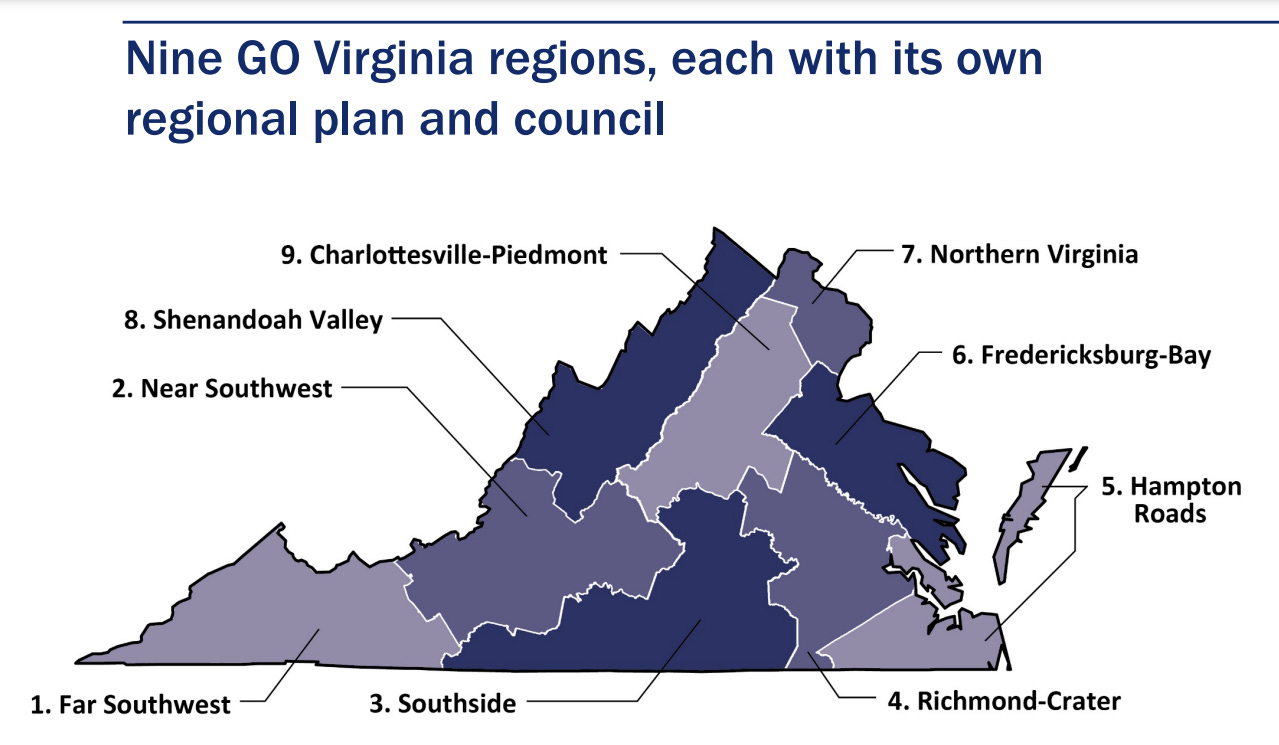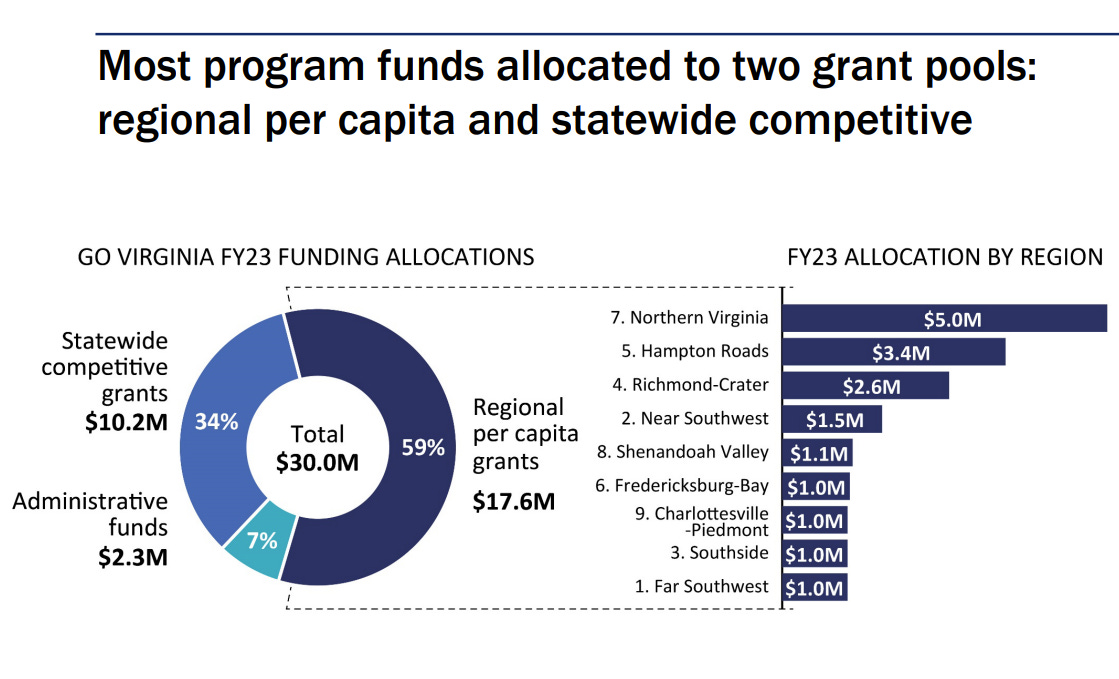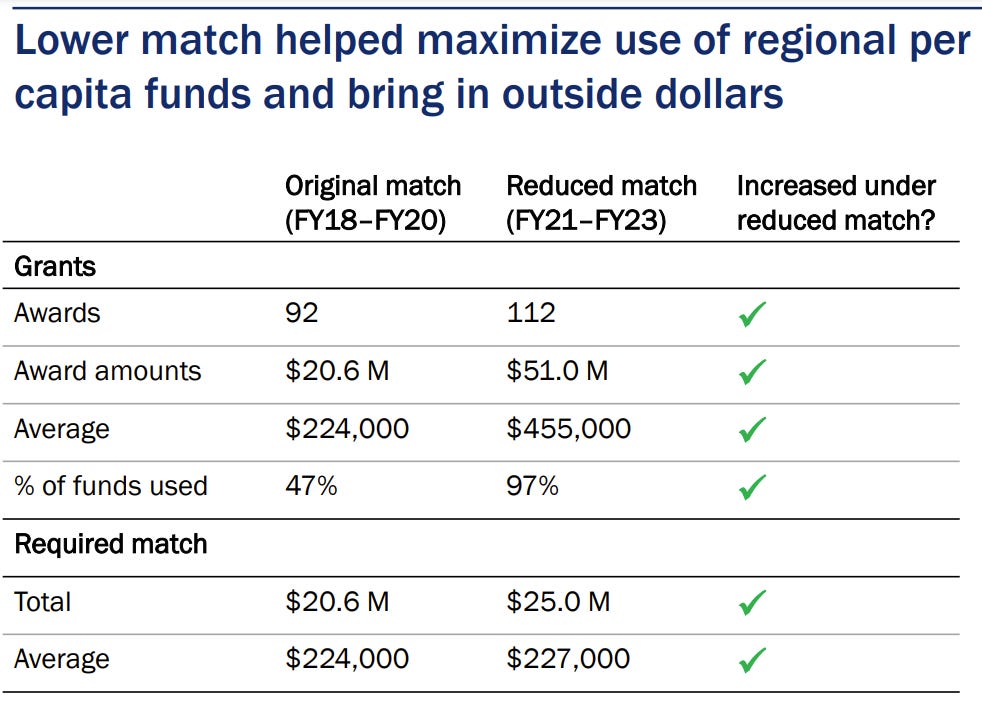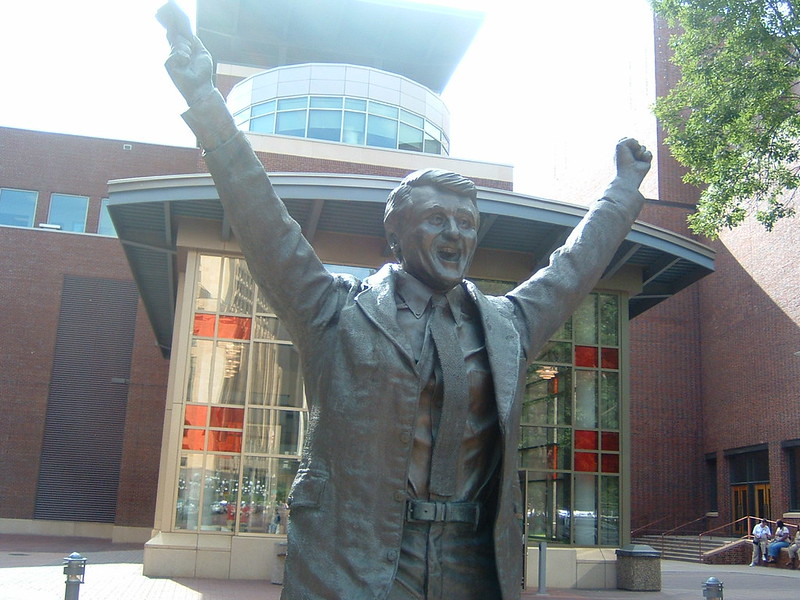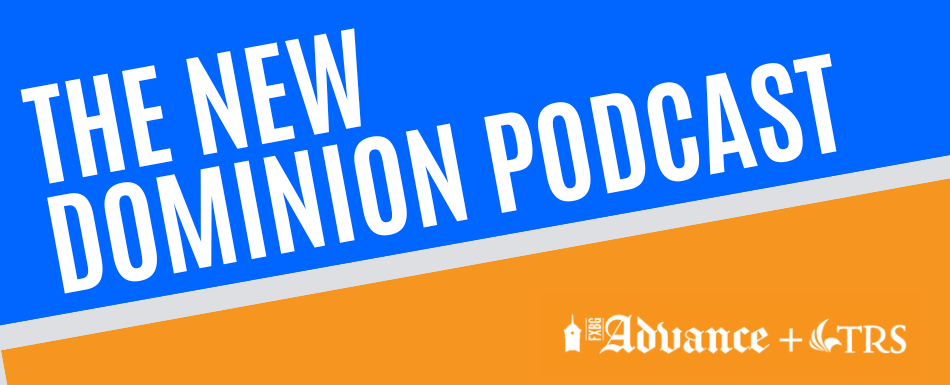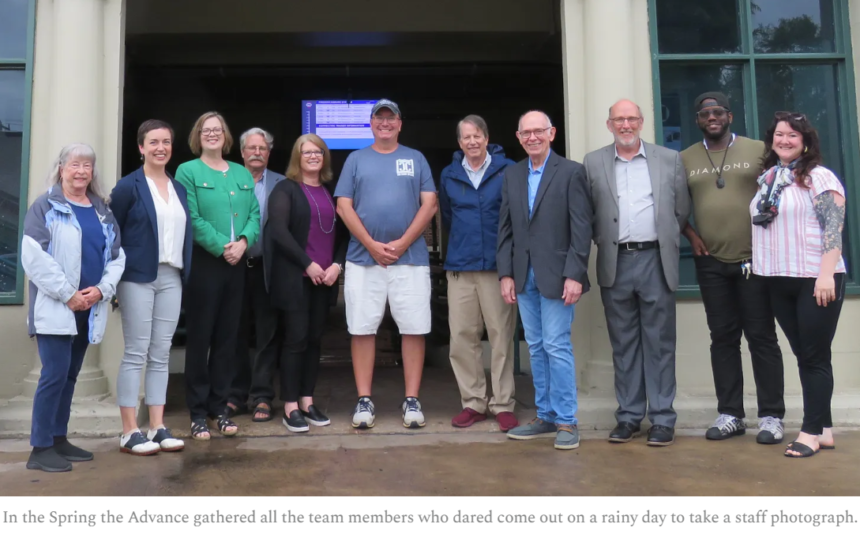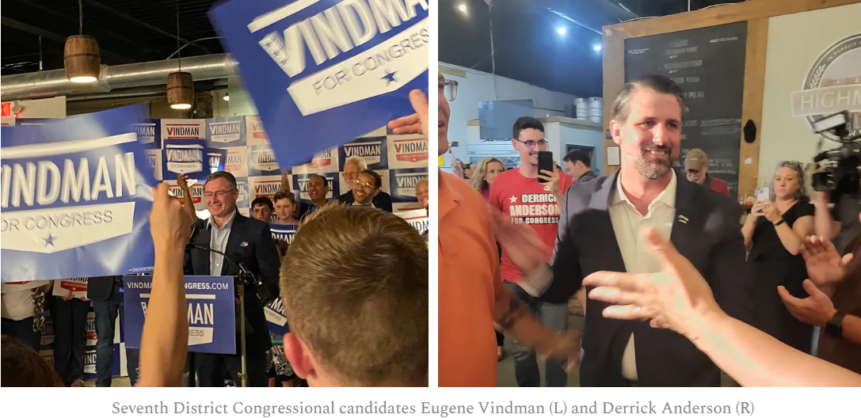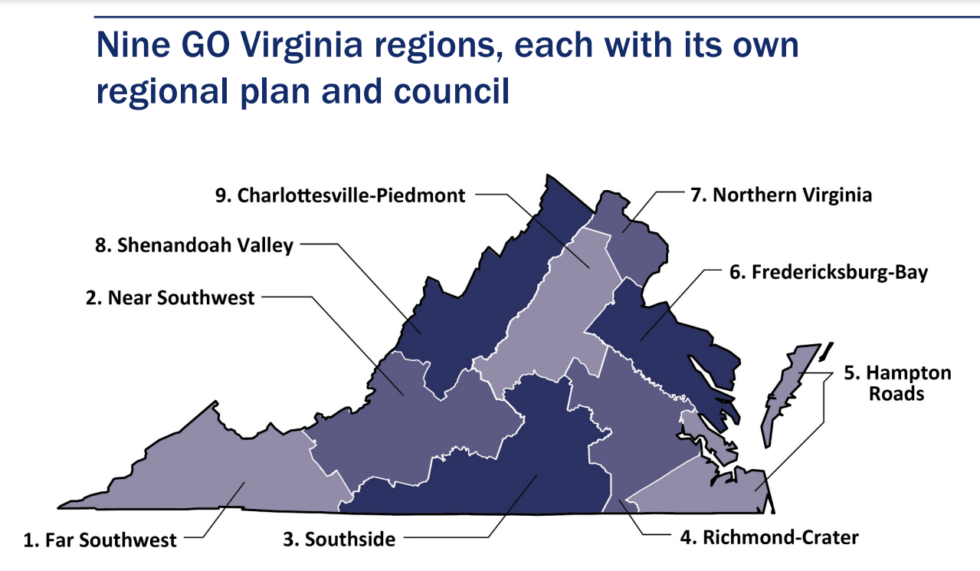
Since 2017, the GO Virginia program has given $110 million in grants for the dual purpose of improving regional collaboration, while growing and diversifying the economy.
A report by the Joint Legislative Audit and Review Committee (JLARC) released last week concluded that GO Virginia was successfully improving regional collaboration. However, it also cited issues with measuring program impacts due to the way project outcomes are reported.
Growing Regional Collaboration
To increase work projects across city and county lines, GO Virginia requires that proposed projects include at least two local governments, school divisions or regional organizations.
Of the projects JLARC reviewed, most surpassed the number of localities involved. Moreover, to date all 133 localities in Virginia have participated in at least one project.
About two-thirds of the grants have gone to public organizations, while a third have gone to nonprofit organizations. Grants “cannot be used to benefit or attract any specific business,” per JLARC. Rather, the grants support four workforce and economic development strategies:
- WORKFORCE DEVELOPMENT
44% of grants
$49 million awarded - SITE DEVELOPMENT
14% of grants
$23 million awarded - START-UP ECOSYSTEM
22% of grants
$17 million awarded - CLUSTER SCALE-UP
20% of grants
$22 million awarded
Grants are administered by the Department of Housing and Community Development. Grant funding decisions, however, are made by the nine GO Virginia regions, each containing its own governing council, as well as growth and diversification plans, and GO Virginia’s statewide board.
Fredericksburg is in Region 6, and in 2023 received $1 million for grants. That number is on the lower end of the grants distributed across the commonwealth.
GO Virginia in Region 6
To better understand how GO Virginia has worked in our region, the FXBG Advance recently spoke with Ian Ginger, GO Virginia Region 6 Program Director.
FXBG Advance: How large is Region 6?
Ian Ginger: There are 15 localities (counties) spanning Region 6 located in the greater Fredericksburg area, Northern Neck, and Middle Peninsula. This Region includes Planning Districts 16, 17, and 18.
FXBG Advance: Our region has not received as much as Regions 2, 4, 5, and 7. Can you explain how money is distributed across the state, and how much money has been made available for grants in Region 6?
Ginger: There are nine total regions, and each region is allocated money for projects every fiscal year based on population. For Fiscal Year 2024, Region 6 was allocated a little over $1M to be directed towards projects.
However, since the inception of GO Virginia, Region 6 has been awarded over $8.2 million for projects.
FXBG Advance: One of the requirements of a GO Virginia grant is that the money cannot be used to benefit or attract any specific business. Rather, the money is granted in target industries set by each Region. Could you please say more about the targeted industries in Region 6?
Ginger: Projects span across the following investment areas: workforce development, site development, entrepreneurial ecosystem, and cluster scale up.
Region 6 has six priority industry clusters that projects seek to stimulate:
- Aquaculture/Commercial Fishing/Marine Industries
- Distribution and Logistics
- Forestry/Wood Products/Paper Products
- IT/Data Centers
- Manufacturing
- Professional, Scientific, and Technical Services
GO Virginia funds are designed to be catalyst money for growth in the above industries across the 15 localities.
GO Virginia Issues – Possible Solutions
The JLARC report also noted two major issues with the GO Virginia program.
The first is related to measuring outcomes. JLARC found that several outcomes are “misleading or not reliable.”
Reasons for this range from self-reporting of outcomes not attributable to project activity, and outcomes not consistently verified by the regional council staff.
Which DHCD has made progress standardizing metric outcomes, it also has some work to do. Most notable, according to JLARC, is that the “jobs created/filled” metric merges two different outcomes.
The second has to do with matching grants.
From 2018 – 2020, grants required a matching grant equal to the total grant amount. There also had to be a local match, which was the higher of $50,000 or 20% of the total grant.
During COVID, GO Virginia changed its matching criteria to 50% of the total grant, with no local match required.
This decreased match requirement led to more matching funds raised during the COVID period. It also resulted in the distribution of more grant funds. (See chart below.)


